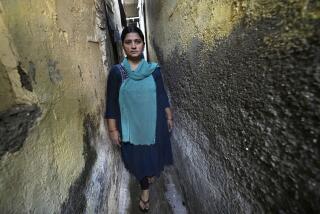Latest U.N. Labor Statistics Show More Women Work--and More Are Unemployed
- Share via
UNITED NATIONS — More women than ever before now are holding jobs around the world, latest U.N. labor statistics show, and ironically more are also unemployed.
In fact, in many countries unemployment grows faster among women than among men and decreases in women’s unemployment are smaller than in men’s.
The proportion of women in the work force has increased in 21 industrialized and 13 developing nations, according to the new Yearbook of Labor Statistics issued by the International Labor Organization.
In most industrialized nations women make up 35% to 45% of the employed population, ILO says. As in many other statistics, the Nordic nations point the way. Finland, with 48%, and Sweden with 47%, are among the highest. In contrast, the women’s share is substantially lower in Spain (29%) and Greece (33%).
Numbers Increased in U.S.
In the United States, the women’s share of the work force rose from 43.5% in 1982 to 44.1% in 1985, the yearbook says.
ILO is one of the oldest of the U.N. specialized agencies. It was founded in 1919 after World War I and has its headquarters in Geneva.
In Latin America and the Caribbean, the number of women in the employed population ranges from 26% in Costa Rica to 44% in Barbados, the yearbook says.
Asian countries show less fluctuation, from 36% in Singapore to 39% in South Korea.
Noticeable increases in the number of women employed have been registered in Uruguay (from 38% to 41%), New Zealand (from 34% to 36%), and the Netherlands (from 33% to 35%).
Gap Has Widened
Australia is one exception, showing a decrease in the women’s share of the working population from 37% to 34%.
On the other side of the coin, ILO says, unemployment rates for women in most countries continue to be higher than for men, and the gap, particularly in industrialized nations, has actually widened in the last four years.
Eighteen out of 23 industrialized nations and 12 out of 16 developing countries show higher rates of unemployment for women than for men, according to ILO. The unemployment rate of women, in fact, is double or more that of men in such industrialized nations as Belgium (1.9 times) and Italy (2.5 times), the ILO statistics showed.
In the last four years the number of industrial nations where women’s unemployment was higher than men’s rose from 15 to 18. In the developing world the difference exists too, but is not so strongly marked.
Worrisome Trend
The Year Book notes the worrisome trend in which Women’s unemployment increases more and diminishes less than men’s unemployment.
“This situation is not new,” the ILO says. “Such trends were already noticeable during the 1983-84 period. Yet, the phenomenon by which female unemployment grows higher and decreases less than male unemployment now affects 14 out of 25 advanced countries and 9 out of 16 developing countries.”
This is particularly so in Austria, Australia, Canada, Denmark, West Germany, Hong Kong, the Netherlands, Spain, Switzerland, the United States and Venezuela.
Higher Unemployment
Some examples of increased unemployment: West Germany, 0.1% for men, 0.2% for women, Costa Rica 1.5% for men, 2.9% for women.
Where unemployment decreased, these are some comparisons: Australia, minus 0.9% for men, minus 0.3% for women, Hong Kong, minus 0.3% for men, minus 0.2% for women.
In the United States, women’s unemployment dropped at a rate of one-half of that of men. Women’s unemployment dropped from 7.6% in 1984 to 7.4% in 1985.
More to Read
Sign up for Essential California
The most important California stories and recommendations in your inbox every morning.
You may occasionally receive promotional content from the Los Angeles Times.









